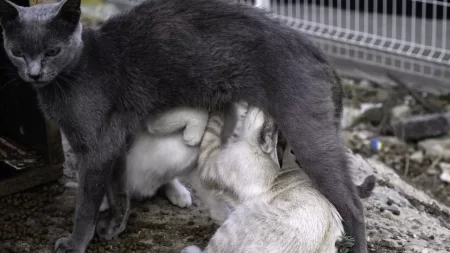Yes, you can change cat food brands, but it’s important to do so gradually to avoid upsetting your cat’s digestive system. When transitioning to new cat food, take the time to understand your cat’s nutritional needs and monitor their response. With some patience and care, changing brands can be done safely.
Can I Change Cat Food Brands?
Benefits and considerations when changing brands
There are several reasons you may want to switch your cat to a different food brand. You may have heard about a new premium diet you’d like to try, learned your current brand was recalled, or have a cat with a health condition that requires a specialized diet. As long as you transition slowly, changing foods is perfectly safe in most cases. However, cats can be picky, so be alert to any signs your cat is not adjusting well to the new food.
Understanding your cat’s dietary needs
Cats require a balance of protein, fat, carbohydrates, vitamins, and minerals. They also need adequate moisture in their diet, which can come from wet food or drinking water. Understand what your cat needs from their diet and read labels carefully to find another brand that provides similar nutrition. Consult your vet if your cat has any special dietary requirements.
Gradual transition and monitoring response
Switching foods suddenly can upset your cat’s stomach. To transition gradually, mix a small amount of new food with your cat’s old food. Over 2-3 weeks, slowly increase the ratio of new to old food. Monitor your cat’s digestion during this time. Stop transitioning if any issues arise and consult your vet.
How to Safely Switch Cat Food Brands?
Introducing new food gradually
Start by mixing a quarter cup of new food with three-quarters cup of your cat’s old food. Slowly increase the ratio of new food every few days. Only feed 100% new food once your cat has adjusted over 7-10 days.
Mixing old and new food
To ensure your cat eats both types, mix the old and new food together thoroughly in one bowl. Never offer the two foods separately, as your cat may resist trying the new one. Mixing stimulates them to try new food.
Monitoring health and response
Weigh your cat weekly to ensure they are not losing weight due to the new food. Check their stool for optimal consistency and health. Note any changes in appetite, energy, or behavior that may indicate the food is not agreeing with your cat.
Signs Your Cat Isn’t Adjusting Well to New Food
Digestive upset
Diarrhea, constipation, vomiting, or gas can mean the new food is not digesting properly. Stop transitioning and wait a few days before trying again more slowly. Consult your vet if symptoms persist.
Decreased appetite
Cats may begin eating less if they dislike the taste of new food. Tempt their appetite by warming the food or adding warm water to make it more aromatic.
Changes in energy or behavior
If your cat seems more lethargic or irritable on the new food, they may not be getting proper nutrition. Likewise, increased hyperactivity could signal an adverse reaction. Check with your vet if any concerning symptoms arise.
By gradually transitioning to a new high-quality cat food and remaining alert to your cat’s response, you can successfully switch food brands and provide optimal nutrition. Monitor closely for the first few weeks on any new diet. With some patience, your cat should adjust to their new cuisine.







